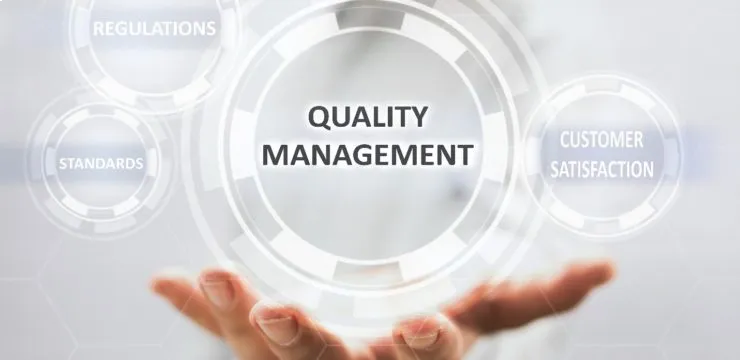Experience in implementation of the EFQM Model of Excellence in companies of different sizes has historically demonstrated that the model has been implemented by larger companies considerably more often than by small and medium sized enterprises (SMEs).
However, the backbone of many of the world’s leading economies is formed by SMEs, commonly defined as companies that have a staff headcount of below 250 and less than 50 million euros in annual turnover. SMEs represent 99.8% of all businesses in the European Union and 99.4% of all business in the USA. They accounted for 60% of net new jobs creation in the USA in the period between mid-2009 and mid-2013 and for 71.4% of the increase in employment in the EU in the year 2014.
Despite their economic importance and evidence that SMEs can profit from adopting quality management and business excellence practices to improve their financial and market performance, SMEs adopt the model in a much lesser scale. The reason for this is that SMEs face considerable implementation barriers.
The most widely used business excellence models, such as the EFQM model, were originally developed for larger organizations. SMEs, however, differ from larger firms in several characteristics, most notably by limitations in financial and human resources, personalized management approach, and flexible and informal structures and strategies. SMEs are generally more ‘people-oriented’ than ‘system-oriented’.
Recognizing these differences between SMEs and larger corporations, the question is whether the existing quality management and business excellence models can be adjusted for SMEs and if there is a need for approaches that are more tailored to the specific needs of SMEs.
Motives for adopting business excellence approaches in SMEs
Why do organizations implement quality improvement approaches? The reasons are often either internal and external motives. Internal motives can, for example, include the desire to improve the organization, quality management, productivity, product and service quality, or the quality of planning, on the one hand, or to create an overall strategic framework, on the other hand.
External reasons (such as improving the company image and the competitive position, or showing the effectiveness of management practices) and ‘external reasons of requirements’ (such as customer demands or general requirements for competing in a specific sector) can also play a significant role in many firms.

Obstacles to introducing quality management and business excellence systems in SMEs
Despite a number of potential benefits that the adoption of business excellence systems can offer, SMEs are still often reluctant to take more-encompassing management systems into consideration.
Limited financial, time, and human resources and the systems’ complexity that is difficult to handle for smaller organizations are frequently the reasons for SMEs to ‘shy away’ from using the business excellence models.
In addition to objective resource constraints, major obstacles can also lie in a lack of awareness or understanding of existing quality improvement systems as well as in managerial attitudes and conceptual concerns. A general lack of understanding and incorrect interpretations of the existing systems can add to the doubts that SME managers have regarding formal quality and improvement systems.
There are also some doubts about external assessment quality. Lack of motivation and involvement of employees, and potential resistance to change are often among the biggest hurdles for the implementation of the EFQM model in both companies and public institutions.
Managerial short-term mentality, a lack of top management commitment, and suppliers’ inability to cooperate are further impeding factors for implementing business excellence systems.
SMEs, thus, can also be discouraged from adopting quality management and business excellence approaches because of the following three factors: resource barriers (lack of human, physical, and financial resources), behavioral and cultural barriers (related to a lack top management and employee motivation and commitment), and organizational barriers (related to the inability of the organization to adopt BE systems).
Outcomes of adopting business excellence approaches in SMEs
Several studies have shown that the adoption of business excellence models can be connected to achieving better business results. Improved product quality, an increase in efficiency, and better customer service were identified as the main positive impacts of quality management and business improvement initiatives in a study among manufacturing and
service SMEs.
To summarize, the many companies that adopt business excellence models also tend to perform better than their peers in terms of business results.
How can the business excellence model be adapted to the needs of SMEs?
An earlier attempt to introduce an SME version of the EFQM BE model did not succeed as it used the same (all-encompassing self-assessment) method as the basic model that was developed mainly for larger organizations, only with a lower number of criteria. The main reasons for SMEs’ reluctance to adopt this model were time and resource constraints related to data collection, doubts in the user friendliness of the format (‘considering it to be daunting’), a lack of willingness to conduct a self-assessment, and inability to see how the model leads them progressively through the continuous improvement journey.
Recently, there was a new initiative by several national EFQM partners. It tries to remedy these shortcomings with a new approach, in which SMEs are gradually introduced to business excellence thinking and methods through focusing on just a few major organizational issues that are then processed following the EFQM RADAR logic with the support of outside assessors.
This new approach is in line with most of the requirements for SME-specific business excellence systems, i.e. being systematic yet not too complex, context sensitive, focused on implementable improvement initiatives, and allowing a gradual implementation path with the involvement of top management.
The proposed model involves three steps in SME-focused quality improvement approach: first, major issues that affect an SME’s performance are identified. This is followed by a systematic approach to resolve these issues. Finally, setting up a procedural system helps in setting and keeping standards for the future.













